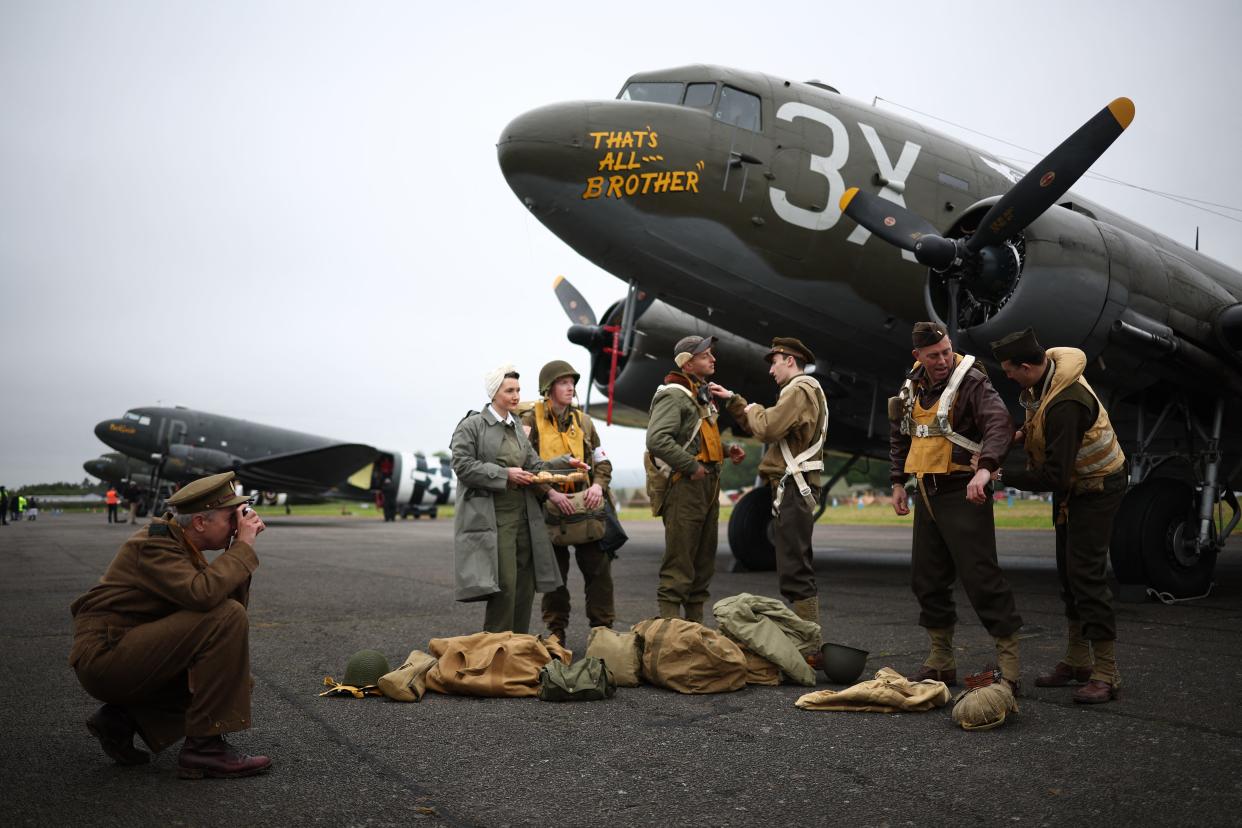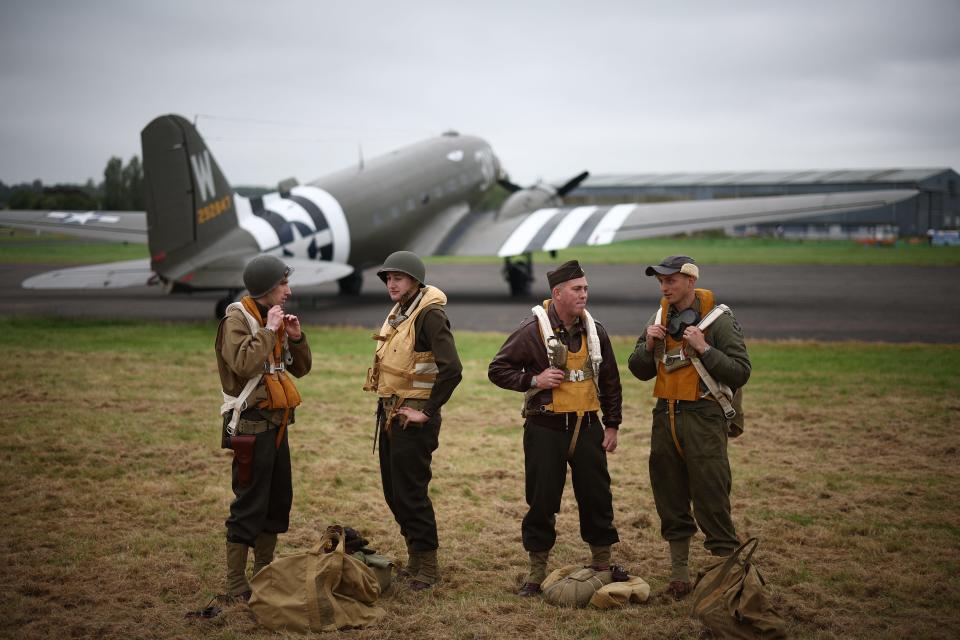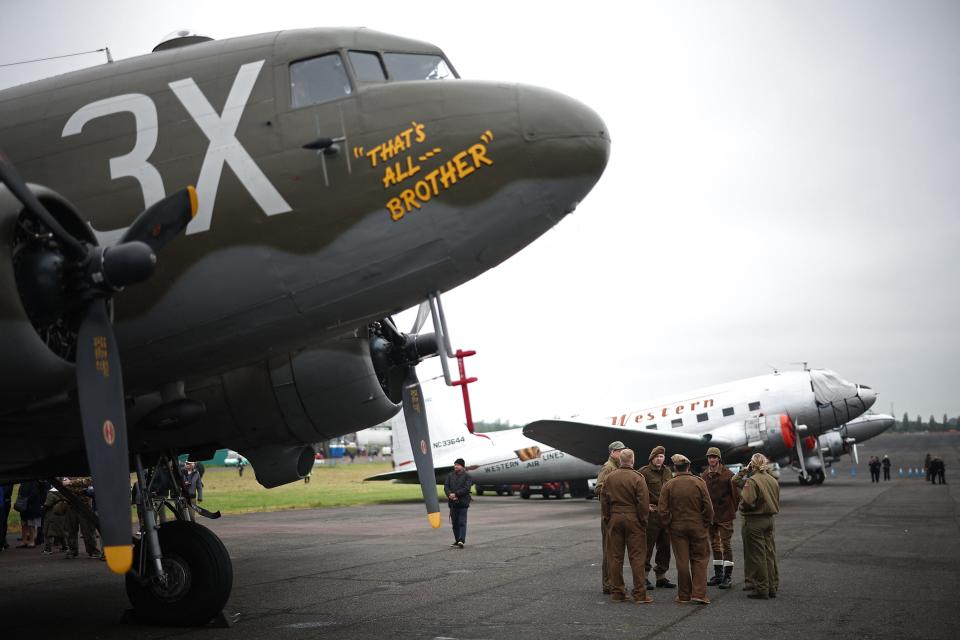How factory workers in Midwest City played a critical role in the D-Day invasion of World War II

In one of the greatest military invasions of all times, a C-47 transport plane built in a Midwest City, Oklahoma, factory led the way in the air, dropping paratroopers and supplies to support the naval attack on the beaches of Normandy.
Military historians say a plane dubbed "That's All, Brother," was the lead aircraft in a fleet of more than 800 that was a key part of the Allied initiative in the war against Nazi Germany. The plane rolled off the assembly line at the Douglas Aircraft Factory in Midwest City on March 7, 1944, a little less than three months before D-Day.
"Half of all the C-47s used in WWII were built or modified to the Army's specs at the Douglas plant," says journalist and author Jim Willis. The plane had two 1,200-horsepower motors, could reach a cruising speed of more than 200 mph and fly more than 1,500 miles without refueling.
More: Midwest City history remembered in new book by native Oklahoman who grew up there
As many as 38,000 Oklahomans worked at the Douglas plant, more than half of them women, said Willis, author of "Tinkertown: A Wheatfield, an Airbase and Us," which was published in April.
Although the workers were often called "Tinker Toilers," Willis said, the women "were true Rosie the Riveters," referring to the iconic poster of a female factory worker flexing her muscle and urging other women to join the war effort with the slogan "We Can Do It!"

"That's All, Brother" was the first of hundreds of paratroop transport planes to carry about 13,000 paratroopers over the heavily fortified beaches at Normandy. Each plane could carry only 10-20 servicemembers, depending on other cargo. Most of the servicemembers were members of the 102nd and 82nd Airborne divisions.
Willis said the C47s were known as "Skytrains" and "Gooney Birds," and the Douglas plant was turning out 13 a day from 1943 to 45.
More: D-Day 80th anniversary: See historical photos from 1944 invasion of Normandy beaches

Midwest City sprung up around the plant and its workers
The plant was located at the Army's Midwest Air Depot, which was not named "Tinker" until 1948. The base was named after Clarence L. Tinker, the first Native American to achieve the rank of general in the U.S. Army. Tinker was born near Pawhuska on the Osage reservation.
Willis said Tinker was also the first Army general to be killed in World War II when his plane developed engine problems and crashed into the Pacific Ocean during the Battle of Midway.
More: A look back at D-Day: Why the World War II invasion remains important on its 80th anniversary
The C-47 was so important to Midwest City residents, Willis said, that "the first and for years the only movie theater there was named the Skytrain."
Midwest City was a planned community, Willis said, built partly on often muddy wheat fields, to accommodate the plant workers. It was incorporated in 1943 and included a school, churches and a shopping center.
According to the Aviation History Museum, "That's All, Brother" and other C-47s served in other World War II battles, then were flown back to the United States where they were sold in the commercial market after the war. Known as DC-3s in commercial aviation, they remained a key component of many airline fleets for decades. In 2007, "That's All, Brother" was found by Air Force historians and restored to its World War II configuration.
More: 'The Americans are landing': A grandmother's 80-year-old diary documents opening of D-Day
This article originally appeared on Oklahoman: D-Day anniversary: C-47 planes that led the invasion built in Oklahoma

